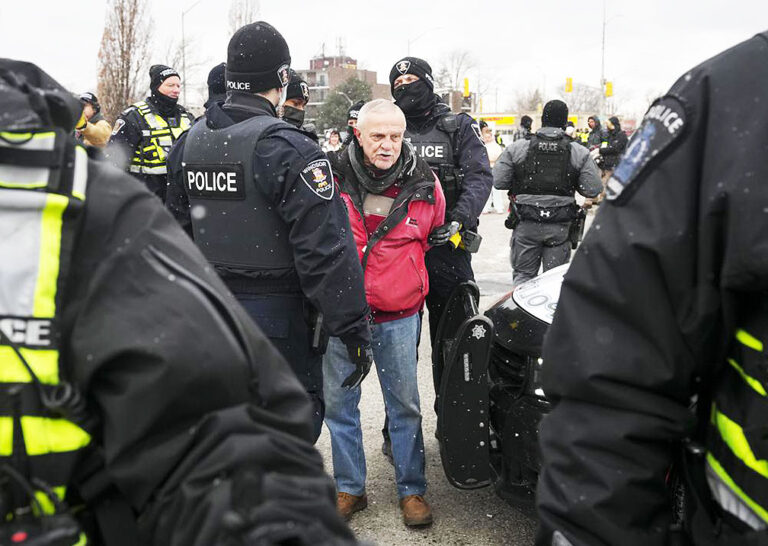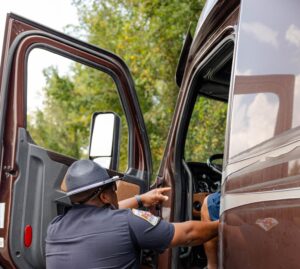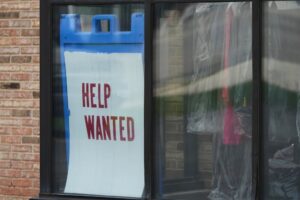WINDSOR, Ontario — Police moved in to clear and arrest the remaining protesters near the busiest U.S.-Canadian border crossing on Sunday, ending a demonstration against COVID-19 restrictions that has hurt the economy of both nations even as they held back from a crackdown on a larger protest in the capital, Ottawa.
Local and national police formed a joint command center in Ottawa, where protests have paralyzed downtown, infuriated residents who are fed up with police inaction and turned up pressure on Prime Minister Justin Trudeau.
The protests have reverberated across the country and beyond, with similar convoys in France, New Zealand and the Netherlands. The U.S. Department of Homeland Security warned that truck convoys may be in the works in the United States.
Windsor police said about 12 people were peacefully arrested and seven vehicles were towed just after dawn near the Ambassador Bridge that links their city — and numerous Canadian automotive plants — with Detroit.
“Today, our national economic crisis at the Ambassador Bridge came to an end,” said Windsor’s Mayor Drew Kiklen, who expressed hope the bridge would reopen Sunday. “Border crossings will reopen when it is safe to do so, and I defer to police and border agencies to make that determination.
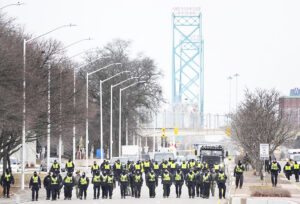
Only a few protesters had remained after police on Saturday persuaded demonstrators to move the pickup trucks and cars they had used to block a crossing that sees 25% of all trade between the two countries.
U.S. President Joe Biden’s administration on Sunday acknowledged the seemingly peaceful resolution to the demonstration, which it said had “widespread damaging impacts” on the “lives and livelihoods of people” on both sides of the border.
“We stand ready to support our Canadian partners wherever useful in order to ensure the restoration of the normal free flow of commerce can resume,” Homeland Security Advisor Dr. Liz Sherwood-Randall said in a statement.
In Ottawa, the ranks of protesters swelled to what police said were 4,000 demonstrators by Saturday, and a counter-protest of frustrated Ottawa residents attempting to block the convoy of trucks from entering the downtown emerged Sunday.
Clayton Goodwin, a 45-year-old military veteran who was among the counter-protesters, said it was time for residents to stand up against the protesters.
“I’m horrified that other veterans would be down there co-opting my flag, co-opting my service,” said Goodwin, who is the CEO of the Veterans Accountability Commission, a nonprofit advocacy group. “It’s a grift. The city was free. We’re 92% vaccinated. We’re ready to support our businesses.”
The city has seen similar expansions of the protest on past weekends, and loud music played as people milled about downtown where anti-vaccine demonstrators have been encamped since late January.
“The whole city is furious at being abandoned by the people who are supposed to protect us. They have completely abandoned the rule of law. @OttawaPolice have lost credibility. #OttawaPoliceFailed,” tweeted Artur Wilczynski, a senior government national security official at Canada’s Communications Security Establishment.
A former minister in Trudeau’s Cabinet also blasted her former federal colleagues as well as the province and city for not putting an end to the protests.
“Amazingly, this isn’t just Ottawa. It’s the nation’s capital,” Catherine McKenna tweeted. “But no one — not the city, the province or the federal government can seem to get their act together to end this illegal occupation. It’s appalling. … Just get your act together. Now.”
Trudeau has so far rejected calls to use the military but had said that “all options are on the table” to end the protests. Trudeau has called the protesters a “fringe” of Canadian society. Both federal and provincial politicians have said they can’t order police what to do.
Ottawa police said in a statement late Saturday that a joint command center had been established with the Ontario Provincial Police and the Royal Canadian Mounted Police. They said that would beef up enforcement capabilities that had been limited by “safety concerns — arising from aggressive, illegal behavior by many demonstrators.”
Police earlier issued a statement calling the protest an unlawful occupation and saying they were waiting for reinforcements before implementing a plan to end the demonstrations.
Ottawa Mayor Jim Watson declared a state of emergency last week for the capital, where hundreds of trucks remained in front of the Parliament Buildings and demonstrators have set up portable toilets outside the prime minister’s office where Trudeau’s motorcade usually parks.
On Friday, a judge ordered an end to the blockade at the crossing in Windsor and Ontario Premier Doug Ford declared a state of emergency allowing for fines of 100,000 Canadian dollars and up to one year in jail for anyone illegally blocking roads, bridges, walkways and other critical infrastructure.
Partial closures at the bridge started on Feb. 7 and by midweek the disruption was so severe that automakers began shutting down or reducing production. The standoff came at a time when the industry is already struggling to maintain production in the face of pandemic-induced shortages of computer chips and other supply-chain disruptions.
“We are protesting the government taking away our rights,” said Windsor resident Eunice Lucas-Logan. “We want the restrictions removed. We have to wait to find out.”
The 67-year-old has been out supporting the protest for the past four days. She said she appreciated that police have been patient.
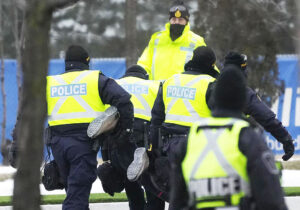
On the other side of the country, a major truck border crossing between Surrey, British Columbia, and Blaine, Washington, was closed on Sunday, a day after Canadian authorities said a few vehicles had breached police barricades and a crowd entered the area by foot.
The RCMP issued a statement saying that while no one had been injured, the actions were dangerous and being investigated.
A border crossing in Alberta remained shut down as well.
While the protesters are decrying vaccine mandates for truckers and other COVID-19 restrictions, many of Canada’s public health measures, such as mask rules and vaccine passports for getting into restaurants and theaters, are already falling away as the omicron surge levels off.
Pandemic restrictions have been far stricter there than in the U.S., but Canadians have largely supported them. Most Canadians are vaccinated, and the COVID-19 death rate is one-third that of the United States.
The Associated Press is an independent global news organization dedicated to factual reporting. Founded in 1846, AP today remains the most trusted source of fast, accurate, unbiased news in all formats and the essential provider of the technology and services vital to the news business. The Trucker Media Group is subscriber of The Associated Press has been granted the license to use this content on TheTrucker.com and The Trucker newspaper in accordance with its Content License Agreement with The Associated Press.







